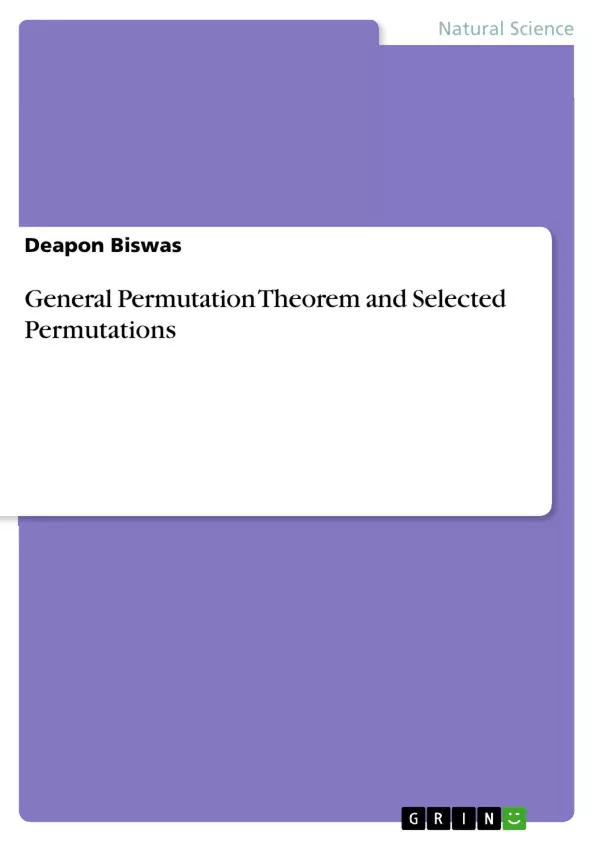We have permutations are discussed with different theorems in algebra. In this chapter I apply B system analysis to get the theorems easy and memorable. After B system analysis applied there becomes a lot of new theorems and all the theorems get a new face by summation methods. One usual theorem described with summation method and face new looks.
Inhaltsverzeichnis (Table of Contents)
- Introduction
- Preliminaries
- Permutation Space
- Permutation Member
- Permutation Theorem
- Permutation Event
- Identified Permutation Theorem
- Permutation Partial Space
- Permutation Partial Event Type I
- Permutation Partial Event Type II
- General Permutation Theorem
- Permutation Distribution
- Selected Permutations
- Selected Permutation Theorem
- Identified Selected Permutation Theorem
- Conclusion
Zielsetzung und Themenschwerpunkte (Objectives and Key Themes)
This paper explores the concept of permutations within the framework of B system analysis. The author utilizes this approach to present a new perspective on established permutation theorems, leading to the discovery of novel theorems. The goal is to simplify and make these theorems more memorable.
- Permutation space and its characteristics
- Permutation theorems and their derivation using B system analysis
- Application of permutation concepts to selected permutations
- Introduction of new permutation theorems through the summation method
- Exploration of permutation distribution and its properties
Zusammenfassung der Kapitel (Chapter Summaries)
- Introduction: This section defines permutations as the outcomes of a random experiment, emphasizing the role of order and non-repetition.
- Preliminaries: The chapter lays out a fundamental permutation theorem, expressed in equation form.
- Permutation Space: The author defines permutation space as the set of all possible permutations resulting from an experiment, providing an example to illustrate the concept.
- Permutation Member: This chapter defines permutation member as an element of the permutation space and clarifies its relationship to permutations.
- Permutation Theorem: The author presents the permutation theorem and provides a detailed proof using the summation method.
- Permutation Event: The chapter explores the concept of permutation events and discusses their characteristics.
- Identified Permutation Theorem: The author presents a permutation theorem related to identified permutations, highlighting its significance and application.
- Permutation Partial Space: This section defines permutation partial space and its properties, providing an in-depth analysis of the concept.
- Permutation Partial Event Type I: The chapter defines and analyzes permutation partial events of Type I, exploring their characteristics and applications.
- Permutation Partial Event Type II: This section explores the concept of permutation partial events of Type II, detailing their characteristics and applications.
- General Permutation Theorem: The author presents and proves the general permutation theorem using the summation method, emphasizing its broader applicability.
- Permutation Distribution: This chapter delves into the concept of permutation distribution, describing its properties and importance.
- Selected Permutations: The author defines selected permutations and explores their properties and applications.
- Selected Permutation Theorem: The chapter presents the selected permutation theorem and its applications, using the summation method to derive the theorem.
- Identified Selected Permutation Theorem: The author presents the identified selected permutation theorem, discussing its significance and applications.
Schlüsselwörter (Keywords)
The paper focuses on permutation theory and its applications, utilizing the B system analysis framework. Key terms include permutation space, permutation member, permutation event, permutation partial space, permutation partial event, general permutation theorem, permutation distribution, and selected permutations. The paper explores new perspectives on these concepts and introduces novel permutation theorems derived through the summation method.
- Citation du texte
- Deapon Biswas (Auteur), General Permutation Theorem and Selected Permutations, Munich, GRIN Verlag, https://www.grin.com/document/1464424



